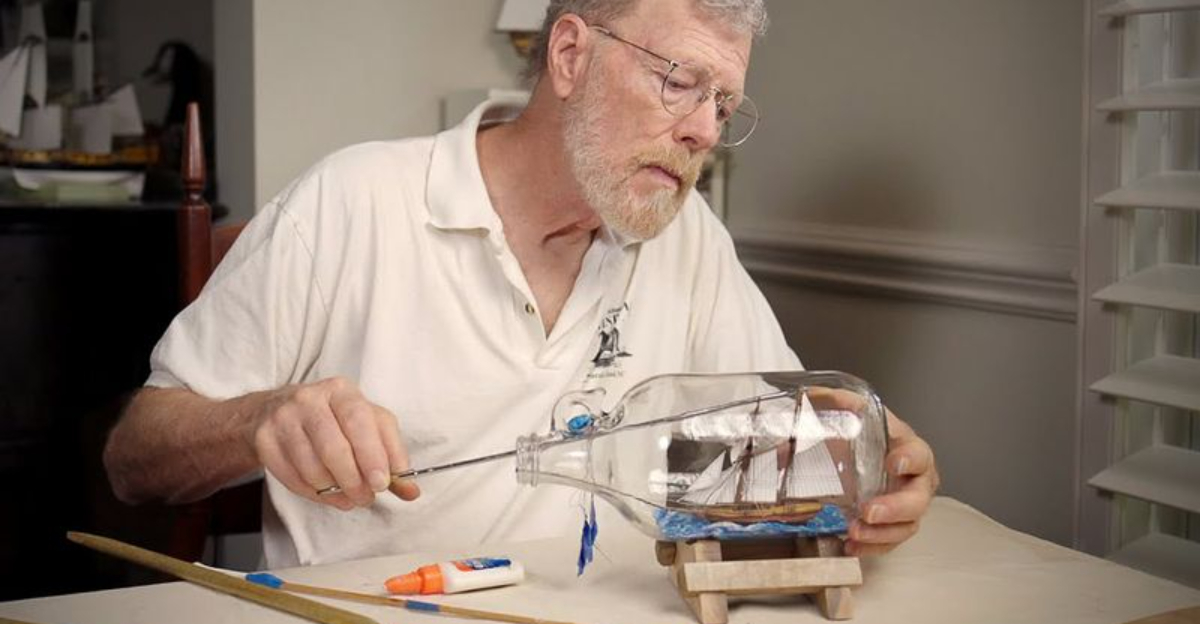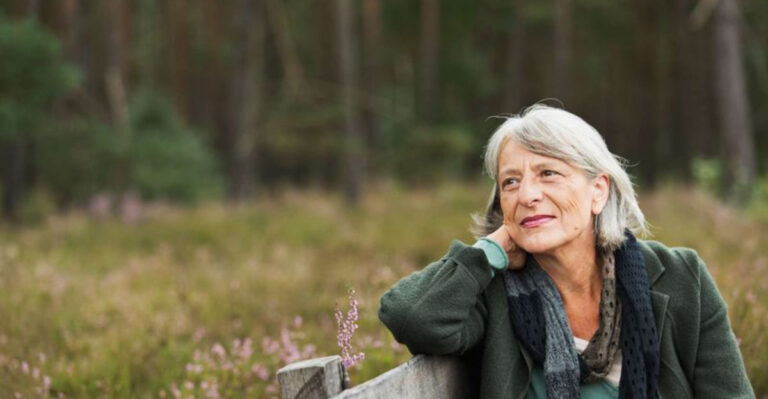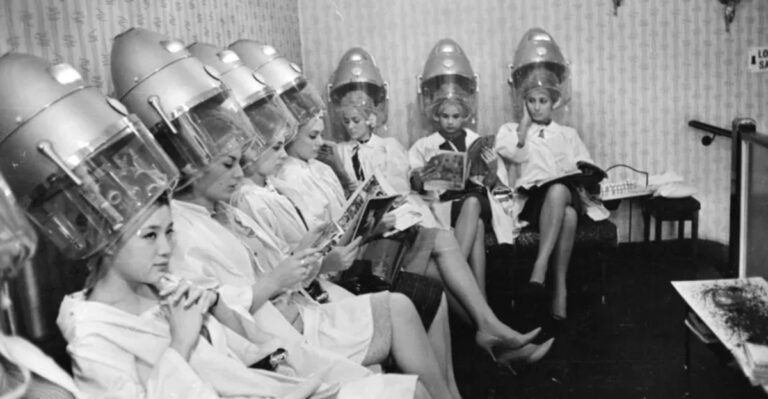Only Boomers Remember These 17 Unusual Hobbies From The 60s
Back in the ’60s, hobbies were about creativity, patience, and a hands-on approach that today’s digital era rarely captures.
These activities, some quirky and others downright unusual, were more than just pastimes; they were a testament to an era that valued craftsmanship and imagination over convenience.
Let’s take a trip down memory lane with 17 unique hobbies from the ’60s that only boomers might recall.
1. Rock Tumbling and Making Your Own Polished Stones
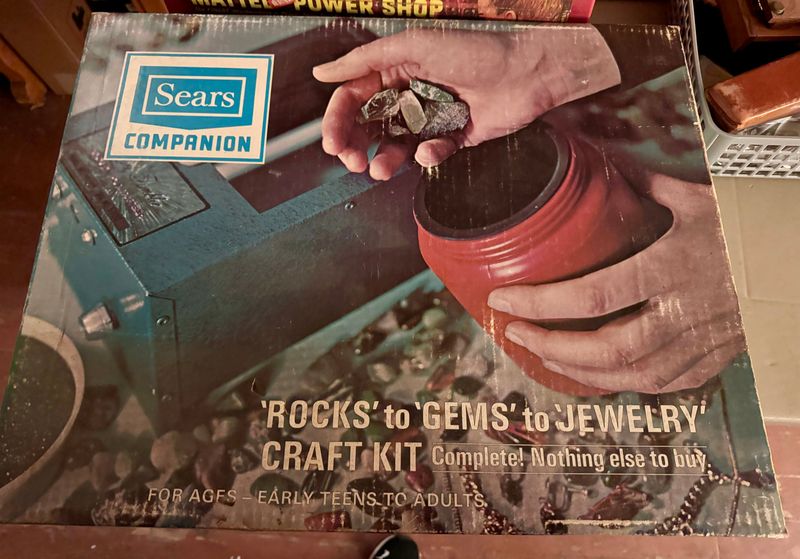
Imagine turning ordinary gravel into sparkling gemstones. In the ’60s, rock tumbling was a mesmerizing hobby. With patience and a bit of machinery, kids transformed mundane rocks into smooth, polished treasures. Every batch was an anticipation-filled journey from rough to refined.
The rhythmic sound of rocks clinking against the tumbler was therapeutic, a soundtrack of creativity at work. As weeks passed, the rough edges vanished, revealing vibrant colors and patterns beneath.
Each stone, once completed, felt like a personal achievement, a tangible result of time and dedication. It wasn’t just about the end product; it was about appreciating the process, understanding geology in a way only hands-on experience could teach. Rock tumbling turned nature’s cast-offs into keepsakes, making it a cherished hobby in many a boomer’s home.
2. Soap Carving into Animals or Flowers
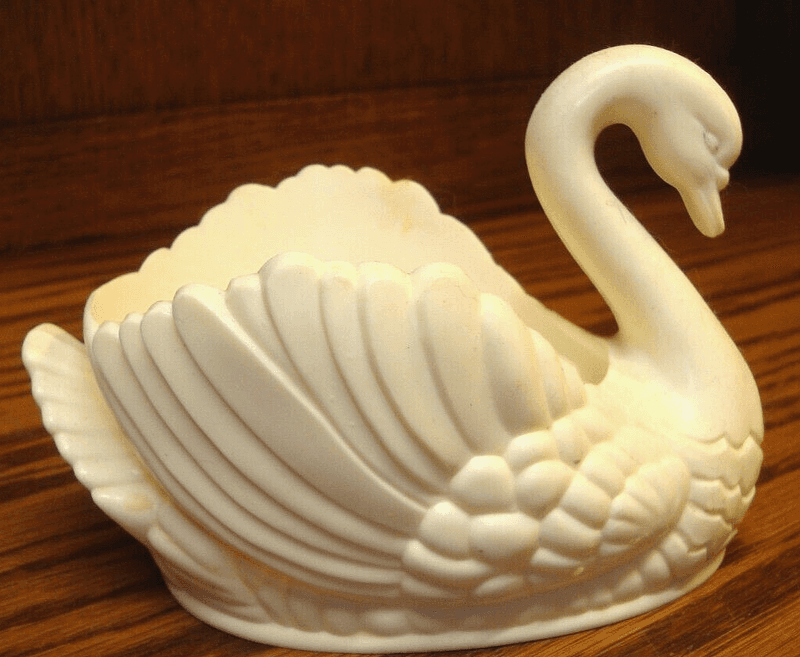
In the days before crafting kits and how-to videos, soap carving was an art form that required only a bar of soap and a knife. The ’60s saw many young artists transforming bland soap bars into delicate flowers, animals, or abstract designs.
The subtle scent of Ivory soap filled the room as carvings took shape under careful hands. Each slice was deliberate, each curve a testament to the carver’s imagination and precision.
Mistakes were easily washed away, making the craft forgiving for beginners and challenging for those striving for intricate detail. This hobby was about the joy of creation, the satisfaction of seeing a vision come to life from a plain bar of soap, and the ephemeral beauty of a sculpture that could simply dissolve away.
3. Collecting Matchbooks from Restaurants
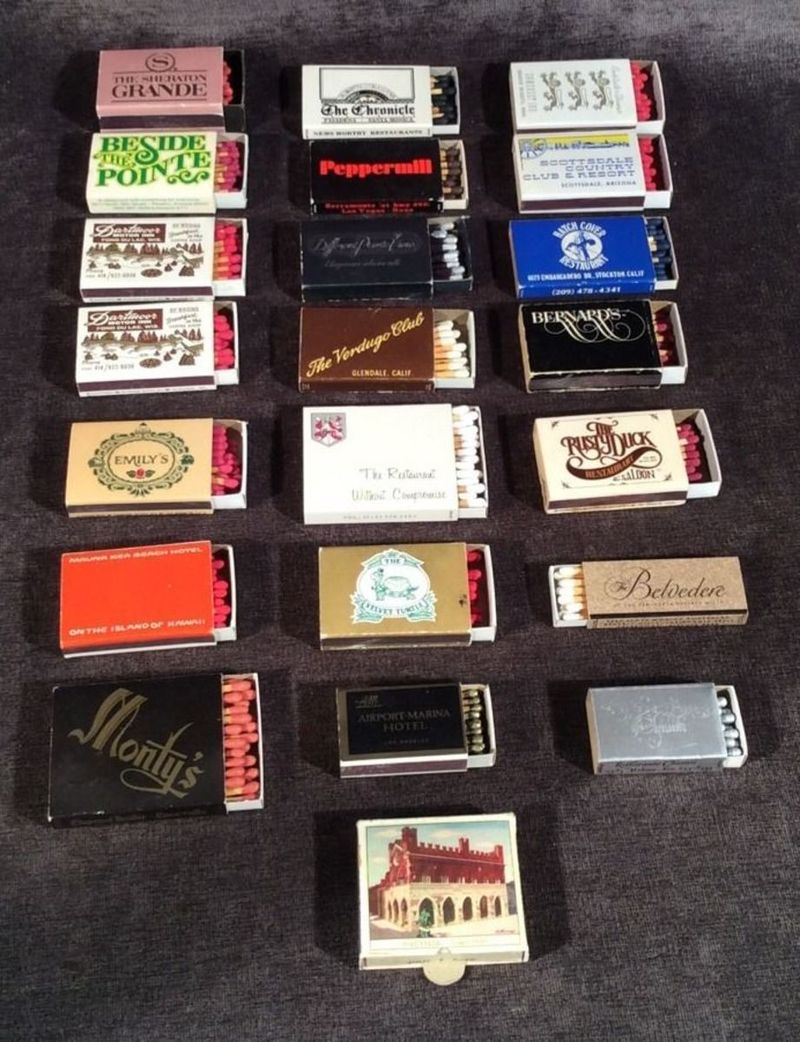
Long before digital check-ins, collecting matchbooks was a tangible way to remember a visit to a restaurant. In the ’60s, matchbooks weren’t just functional; they were tiny canvases showcasing the branding of each establishment.
Flipping through a collection was like taking a cross-country road trip. Each matchbook had its story, a memory of a meal, a gathering, or a moment captured in vibrant print.
They were conversation starters, with some boasting quirky designs or rare finds. Though the hobby may have faded, those who collected these tiny treasures held a piece of history, a souvenir that spoke of the places they had been and the adventures they had embarked upon.
4. Building Elaborate Bottle Ships with Tweezers

The delicate art of constructing miniature ships inside glass bottles was a pastime requiring incredible patience and precision. In the ’60s, this hobby captivated many with its blend of engineering and artistry.
Working with tweezers and an unwavering hand, enthusiasts painstakingly assembled these tiny vessels. Each detail, from sails to rigging, had to be meticulously planned and executed.
The completed ship, encased in glass, was more than just a model; it was a testament to the creator’s dedication and skill. Displayed on a mantel or shelf, these bottled ships were conversation pieces, embodying the spirit of adventure and craftsmanship that defined the era.
5. Playing with Chemistry Sets that Would Now Be Banned
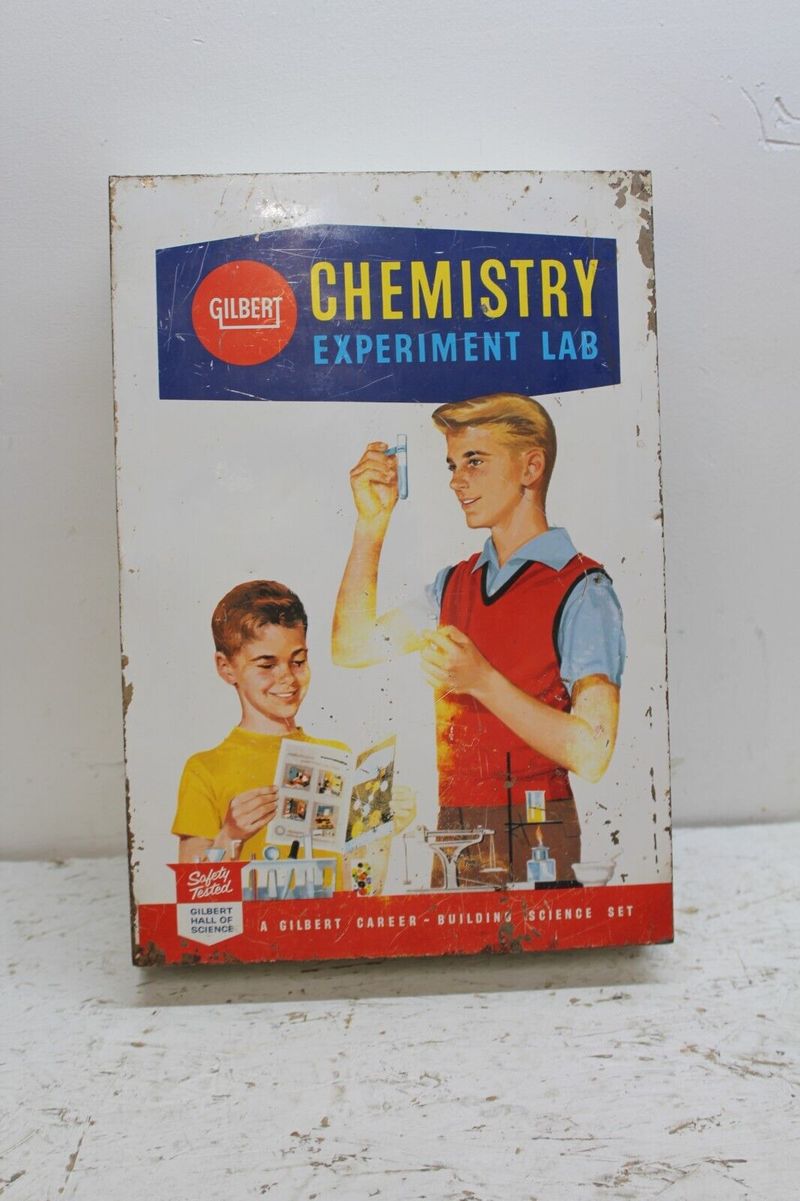
Before safety regulations tightened, chemistry sets in the ’60s were both thrilling and slightly dangerous. They offered young scientists a chance to explore the wonders of chemistry through hands-on experiments.
The allure was in the unpredictability. Mixing potions and creating reactions felt like real magic, sparking curiosity and sometimes, a minor explosion or two.
While modern sets are tame by comparison, those vintage kits were a rite of passage. They inspired a generation of scientists and dreamers, encouraging them to question, experiment, and learn with an adventurous spirit that defined the age of discovery they lived in.
6. Macramé Everything—Plant Holders, Belts, Vests
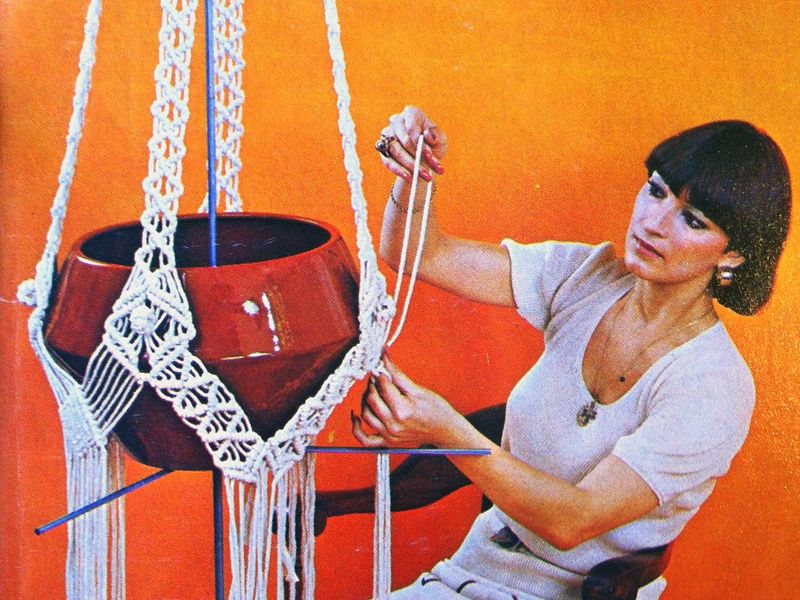
Macramé in the ’60s was a movement of knots and creativity. From plant holders to belts and vests, this craft transformed simple yarn into intricate designs that adorned homes and wardrobes.
With each knot, a pattern emerged, unique and personalized. The tactile nature of weaving, combined with the vibrant colors of the yarn, made macramé both a visual and sensory delight.
It wasn’t just a hobby; it was a form of self-expression. Each creation was a reflection of the maker’s style and personality, a handcrafted testament to the era’s love for all things natural and artistic.
7. Churning Your Own Butter
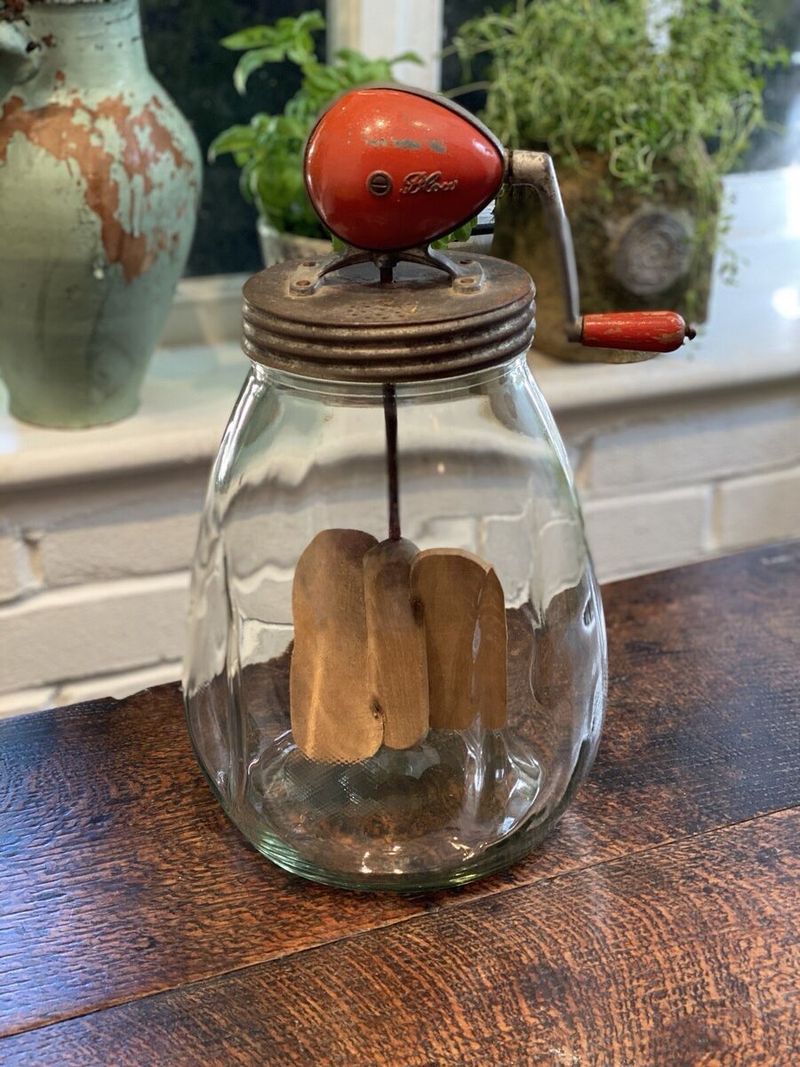
Churning butter was more than just a task; it was a communal activity that brought families together in the ’60s. With each turn of the churn, cream transformed into rich, golden butter, a process that was as rewarding as the fresh spread it produced.
The rhythmic movement was meditative, a slow dance of hands and churn that spoke to simpler times. The resulting butter, with its sweet, creamy taste, was a testament to the effort and love put into making it.
In a world that was beginning to embrace convenience, churning butter was a reminder of the satisfaction found in traditional methods and the joy of sharing homemade goodness with loved ones.
8. Stamp Collecting from Places Unvisited
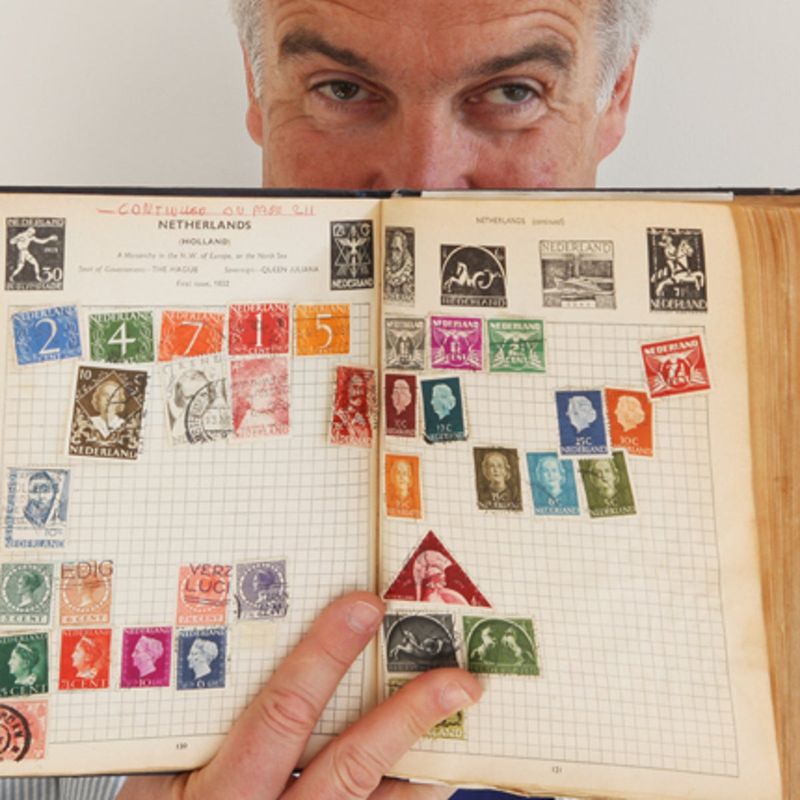
Stamp collecting in the ’60s was a passport to the world for those who hadn’t yet traveled. Each stamp was a miniature work of art, a gateway to distant lands and cultures.
Carefully curating a collection was a journey in itself. Every addition was a new discovery, a window into history, politics, and art, offering both education and escapism.
For many, it wasn’t just about the stamps themselves but the stories they told. The hobby fostered a sense of connection to the global community, inspiring dreams of places unseen and adventures untold.
9. Raising Ants in Ant Farms
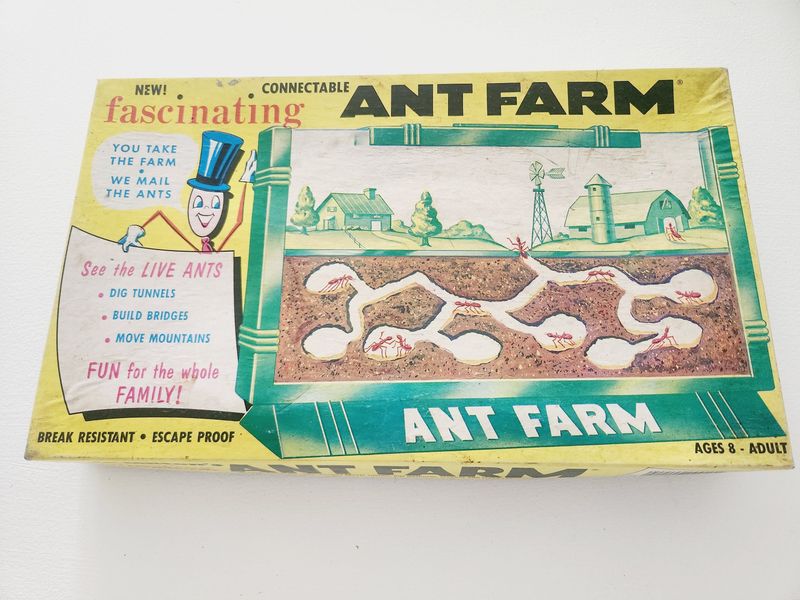
Ant farms in the ’60s were a classroom and an adventure in a box. Watching ants carve tunnels through sand provided endless fascination and a glimpse into the tiny world of these industrious creatures.
Children learned patience and observation, watching colony life unfold with its dramas and routines. Each tunnel was a testament to cooperation and the remarkable organization of ant society.
While some might have seen mere insects, young naturalists saw a world of wonder, learning about ecology and the interconnectedness of life through the lens of an ant farm.
10. Candle Making in Coffee Cans
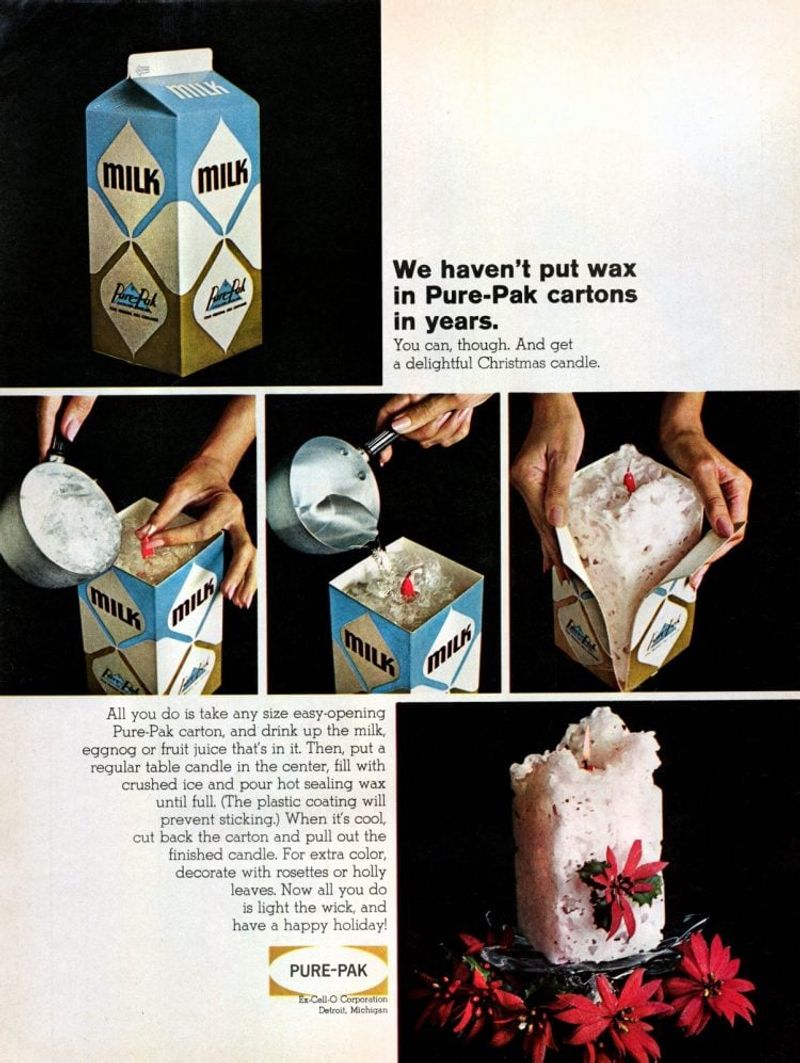
In the ’60s, candle-making was a craft that transformed ordinary kitchens into workshops of creativity. Using simple coffee cans, hobbyists poured molten wax to create candles of every hue and scent.
The art of candle making was as much about the process as the product. From melting the wax to selecting colors and fragrances, each step was a tactile and aromatic experience.
The flickering light of a homemade candle brought warmth and ambiance to any room, a small glow of satisfaction for the creator. It was a hobby that could illuminate both private moments and shared gatherings.
11. Playing with Balsa Wood Airplane Kits
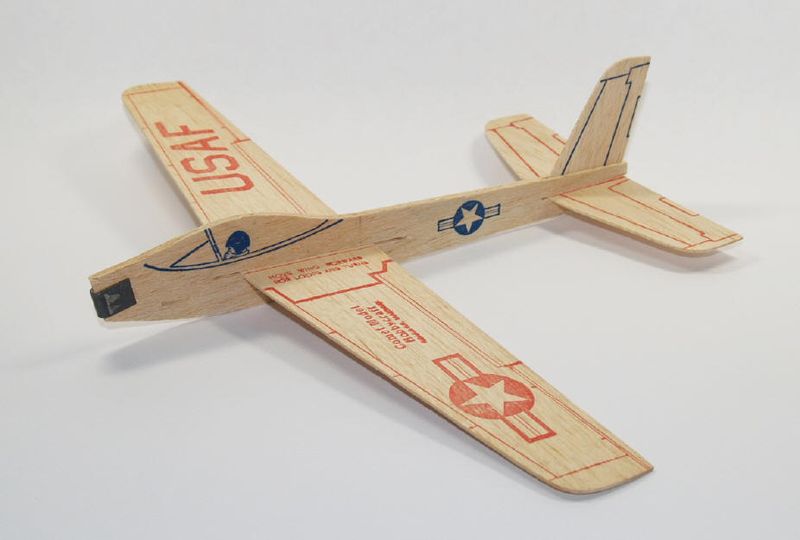
Balsa wood airplanes were the epitome of simple yet thrilling fun in the ’60s. These lightweight models, assembled with care, offered endless hours of outdoor play.
The joy was in the build, meticulously piecing together the delicate structure, balancing weight, and ensuring aerodynamics. Once completed, each launch was a test of craftsmanship and an expression of childhood wonder.
The brief flight of a balsa wood plane was a moment of pure joy and freedom, a reminder of the simple pleasures found in the combination of creativity, patience, and play.
12. Pressing Flowers into Books
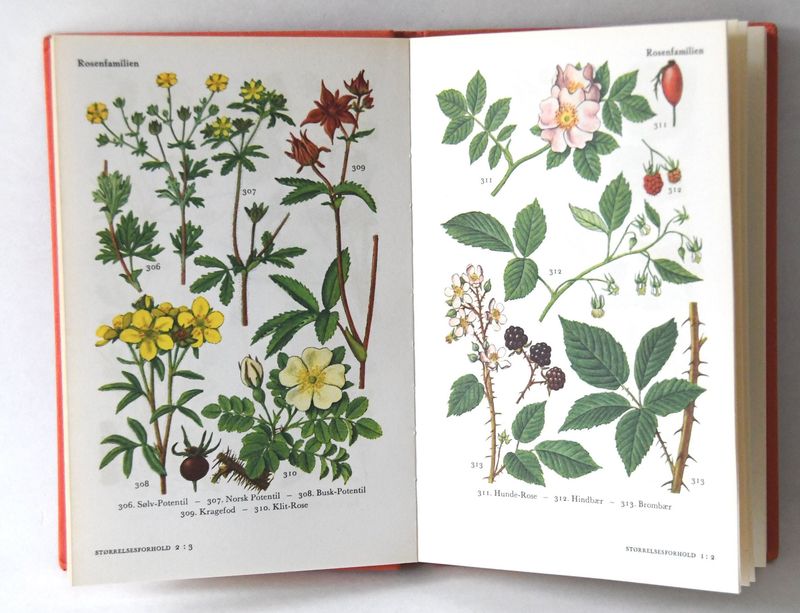
Pressing flowers was a quiet yet poignant hobby that captured the essence of nature’s fleeting beauty. In the ’60s, every bloom pressed between the pages of a book became a lasting keepsake.
The act of selecting and preserving flowers was a ritual of appreciation for the natural world. As the seasons changed, so did the colors and textures of the blooms collected.
Over time, these pressed memories could be rediscovered, each flower a reminder of a specific time and place, a tangible connection to the past and the ever-turning cycle of life.
13. Jigsaw Puzzles with Missing Pieces
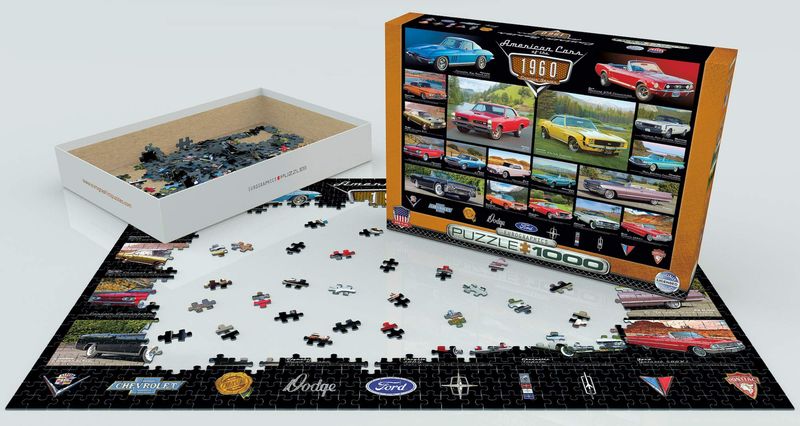
Jigsaw puzzles in the ’60s were about more than just completing a picture; they were about family time and collaboration. Missing pieces were part of the charm, encouraging creativity and conversation.
The satisfaction lay not in perfection but in the process of piecing together fragments into a coherent whole. It was a shared challenge, an opportunity for problem-solving and teamwork.
For many, the joy of a jigsaw puzzle was found in the moments spent with loved ones, the laughter and stories shared over the table, and the simple pleasure of working towards a common goal, even if a piece or two went astray.
14. Whittling Wooden Figurines
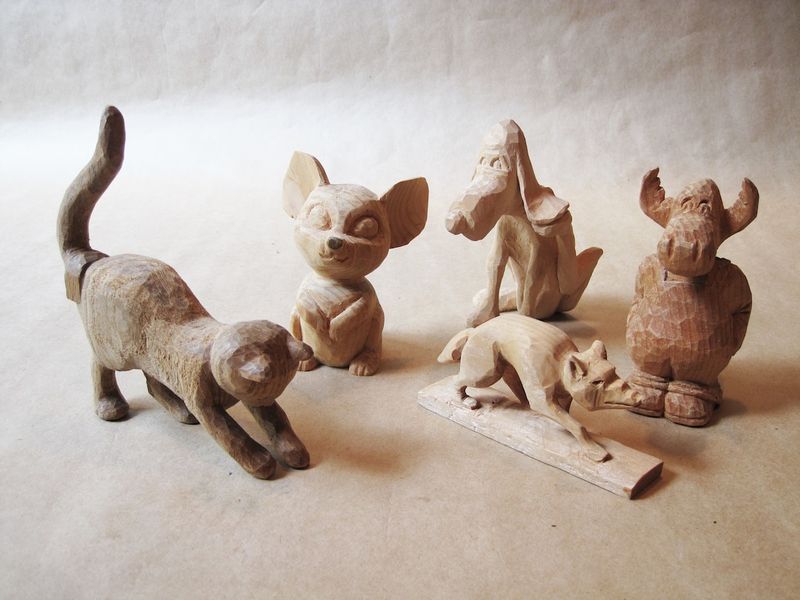
Whittling in the ’60s was an art form born of patience and imagination. A simple piece of wood and a pocket knife were all that was needed to create detailed figurines, from animals to abstract shapes.
The rhythmic motion of carving was meditative, the scent of fresh-cut wood a comforting aroma. Each slice brought the figure closer to life, a process as gratifying as the final product.
These handmade treasures were more than just objects; they were expressions of creativity, skill, and a connection to the past, a nod to a time when crafting with one’s hands was a valued tradition.
15. Leather Tooling for Keychains and Wallets
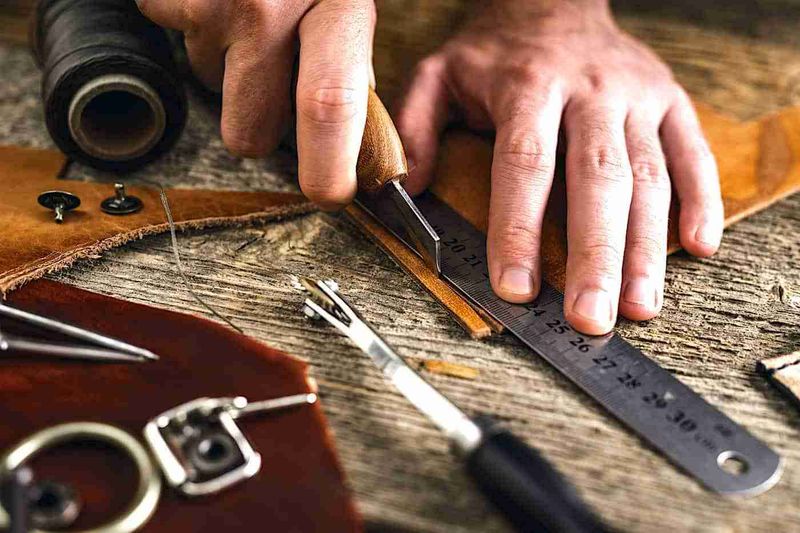
Leather tooling in the ’60s was a craft that combined artistry with practicality. Creating keychains, wallets, and belts allowed hobbyists to personalize everyday items with intricate designs.
The smell of tanned hide and the tactile nature of working with leather made it a satisfying endeavor. Each stamped pattern was a reflection of personal style and skill.
These handcrafted pieces were more than accessories; they were a testament to the time and care invested in their creation, carrying the spirit of the maker in every stitch and imprint.
16. Rock Painting and Hiding Them in Neighborhoods
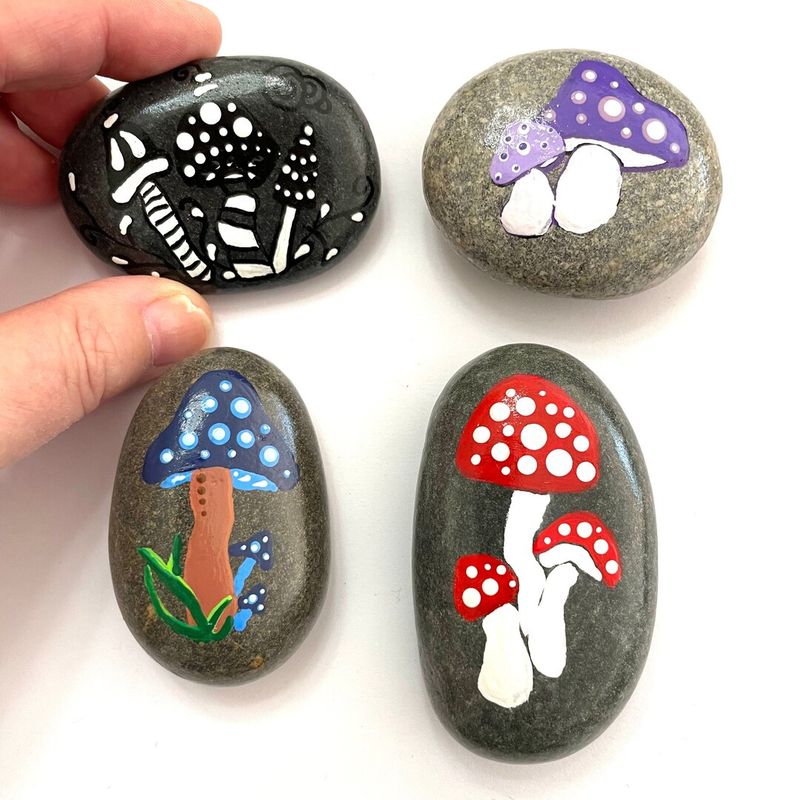
Before social media, rock painting was a way to connect with the community in the ’60s. Brightly painted stones, hidden around neighborhoods, became unexpected surprises for those who found them.
Each rock was a canvas for creativity, adorned with designs ranging from simple patterns to detailed illustrations. The act of painting and hiding them was a shared secret, a gesture of goodwill and fun.
For those who stumbled upon these hidden treasures, they were a delightful reminder of the joy in small things, a momentary pause in the day to appreciate art in the most unexpected of places.
17. Weaving Potholders on Plastic Looms
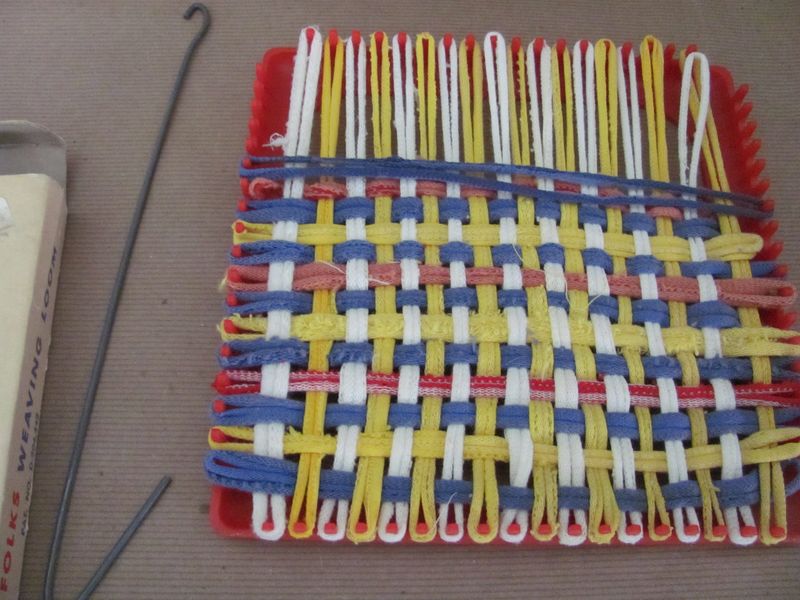
Weaving potholders on plastic looms was a staple craft for kids in the ’60s. These colorful creations, made with loops of fabric, were often gifted to parents and relatives as tokens of love and effort.
The process was simple yet engaging, teaching children about patterns, colors, and patience. Each completed potholder was a small triumph, a usable piece of art made with young, eager hands.
Though modest in scale, these woven wonders symbolized the joy of making and giving, a reminder of the timeless value of handmade gifts and the pride in crafting something from scratch.

